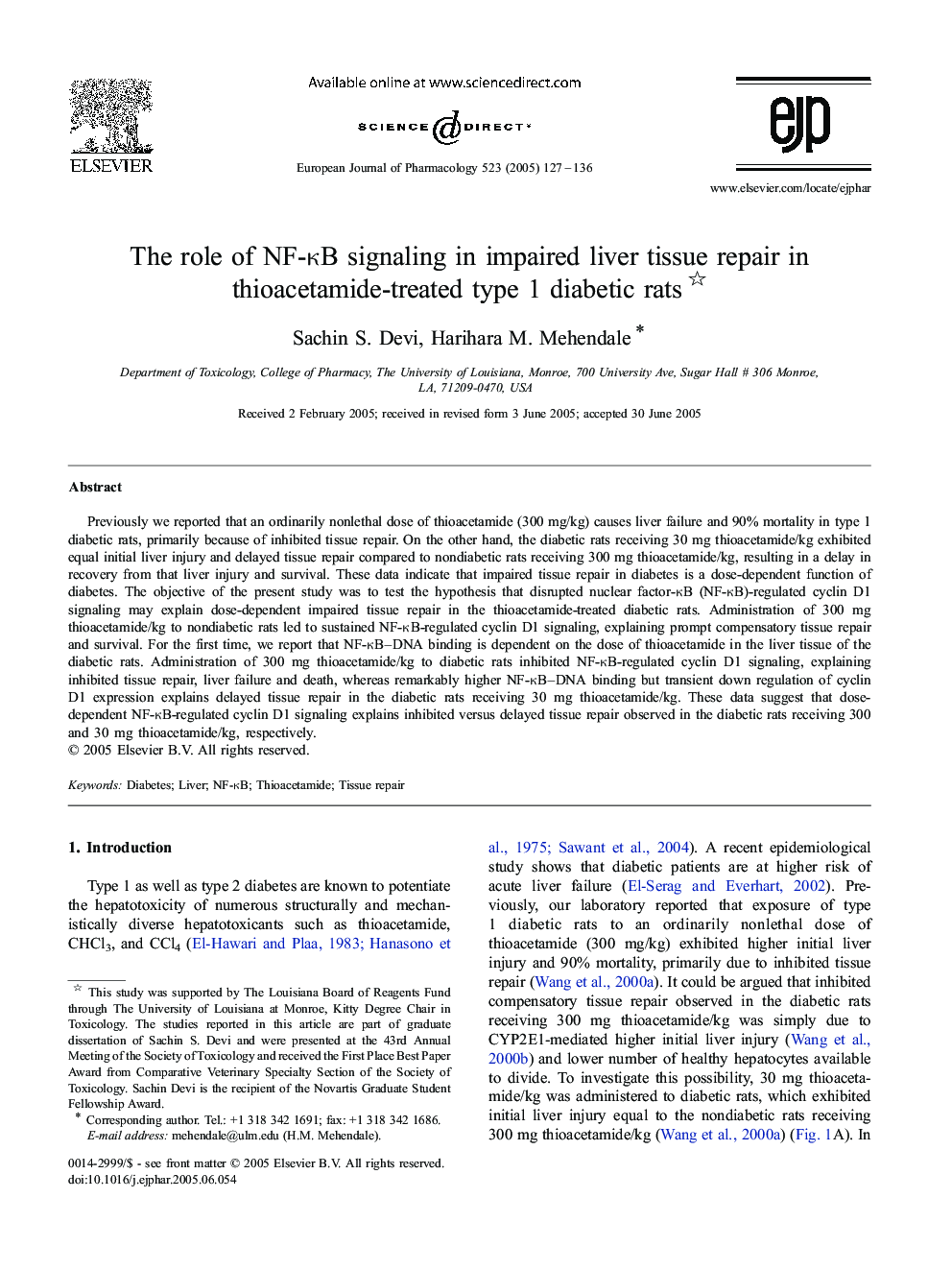| Article ID | Journal | Published Year | Pages | File Type |
|---|---|---|---|---|
| 9921053 | European Journal of Pharmacology | 2005 | 10 Pages |
Abstract
Previously we reported that an ordinarily nonlethal dose of thioacetamide (300 mg/kg) causes liver failure and 90% mortality in type 1 diabetic rats, primarily because of inhibited tissue repair. On the other hand, the diabetic rats receiving 30 mg thioacetamide/kg exhibited equal initial liver injury and delayed tissue repair compared to nondiabetic rats receiving 300 mg thioacetamide/kg, resulting in a delay in recovery from that liver injury and survival. These data indicate that impaired tissue repair in diabetes is a dose-dependent function of diabetes. The objective of the present study was to test the hypothesis that disrupted nuclear factor-κB (NF-κB)-regulated cyclin D1 signaling may explain dose-dependent impaired tissue repair in the thioacetamide-treated diabetic rats. Administration of 300 mg thioacetamide/kg to nondiabetic rats led to sustained NF-κB-regulated cyclin D1 signaling, explaining prompt compensatory tissue repair and survival. For the first time, we report that NF-κB-DNA binding is dependent on the dose of thioacetamide in the liver tissue of the diabetic rats. Administration of 300 mg thioacetamide/kg to diabetic rats inhibited NF-κB-regulated cyclin D1 signaling, explaining inhibited tissue repair, liver failure and death, whereas remarkably higher NF-κB-DNA binding but transient down regulation of cyclin D1 expression explains delayed tissue repair in the diabetic rats receiving 30 mg thioacetamide/kg. These data suggest that dose-dependent NF-κB-regulated cyclin D1 signaling explains inhibited versus delayed tissue repair observed in the diabetic rats receiving 300 and 30 mg thioacetamide/kg, respectively.
Related Topics
Life Sciences
Neuroscience
Cellular and Molecular Neuroscience
Authors
Sachin S. Devi, Harihara M. Mehendale,
